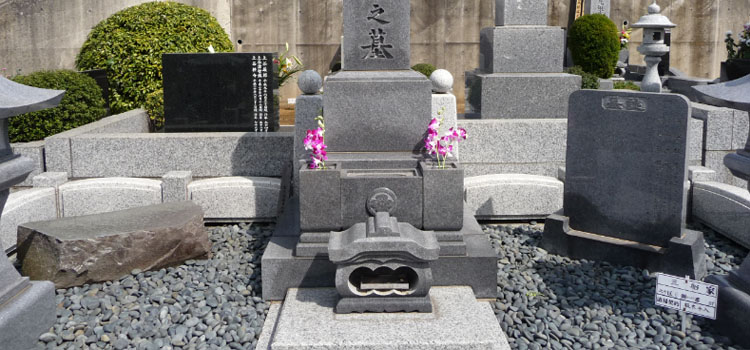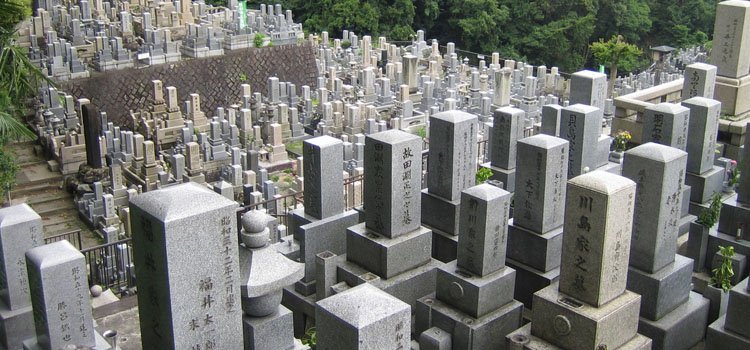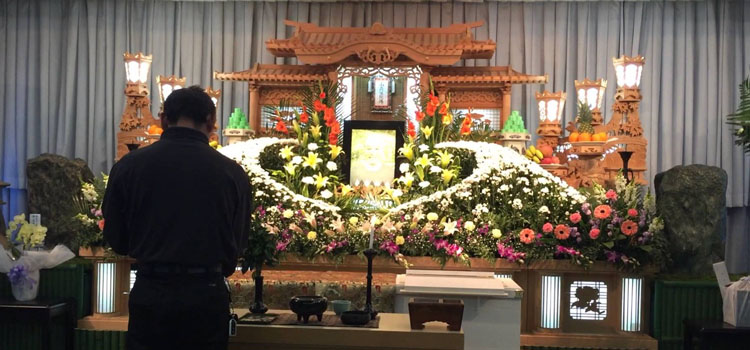Funeral rituals in Japan are deeply rooted in Buddhist and Shinto tradition, creating practices that differ significantly from those in other countries. One of the main peculiarities is the high prevalence of cremation: about 99% of bodies are cremated, and the ashes are used for a variety of purposes that reflect spiritual beliefs, memory, and innovation. From home Buddhist altars to sending ashes into space, Japan blends ancestral respect with modern advancements.
Next, we will explore funeral rituals, the characteristics of Japanese cemeteries and tombs, as well as some curiosities that help understand how Japan deals with death and the memory of loved ones.
Table of Content
Funeral Rituals in Japan
The Preparation of the Body and the Wake
In Japan, the preparation of the body follows a ritual called nokan (納棺), performed by trained professionals. They dress the deceased in specific clothing, usually white, symbolizing purity and transition to the spiritual world. This process gained international notoriety with the film Okuribito (Departures), winner of the Academy Award for Best Foreign Language Film, which depicts the delicate work of these professionals.
The wake, known as Tsuya (通夜), is a moment of prayer and farewell. Family and friends attend dressed in black and make monetary offerings in white envelopes. The Buddhist priest recites sutras to guide the spirit of the deceased, while those present pay their respects in silence.
Cremation and Bone Ritual
Cremation is one of the central elements in Japanese funerals. After about an hour in the crematorium, family members participate in a unique ritual: using hashi (chopsticks), they pass the remaining bones among themselves, starting from the feet and ending at the head. This gesture symbolizes unity and respect, but also reinforces the emotional bond between loved ones.
This act is exclusive to the Japanese funeral, and therefore, sharing food directly with hashi between two people is considered a taboo, as it reminds of the funeral ritual.

Tombstones and Cemeteries in Japan
Tomb Structure
Japanese tombs, called haka (墓), are stone monuments that follow a very distinct pattern. They usually include:
- A space for incense and flowers;
- An underground crypt for the ashes;
- Messages engraved in stone, including the family name and often family symbols or crests (kamon).
Some tombstones feature modern innovations, such as stone lanterns, mailboxes for letters from loved ones, and even touch screens that display photos or genealogical information. It is common for the names of living family members to be engraved in red, indicating that they are still in this life.
Modern Cemetery in Japan
Cemeteries in Japan are smaller compared to those in other countries, reflecting the limited urban space and the high cremation rate. Some families choose to maintain household altars (butsudan) or create private graves on their properties.
To save space and costs, there are also vertical cemeteries and high-tech columbariums, where ashes are stored in urns identified by electronic systems. Another growing alternative is ecological burial, with ashes being buried alongside trees that serve as a memorial.
Tombs of Famous People
Graves of public figures or celebrities often have enhanced security. This prevents incidents like ash theft, which, unfortunately, have occurred in the past by obsessive fans or for extortion purposes.

Curious Facts and Innovations in Funerals
Sending Ashes to Space
A growing trend in Japan is to send part of the ashes into space. This service is sought after by families who want to honor the deceased in a unique and innovative way. Specialized companies conduct small orbital launches, allowing the ashes to remain in the cosmos as an eternal memorial.
Animal Funerals
In Japan, pets also receive elaborate ceremonies. There are crematories and cemeteries dedicated exclusively to them, with altars and graves similar to those of humans.
Funeral Costs
The average cost of a funeral in Japan exceeds 2 million yen (approximately R$ 63,000), making it one of the most expensive in the world. This amount includes services such as cremation, wake, religious ceremonies, and the purchase of graves, which can be extremely sophisticated.
Superstitions Related to the Dead
Many superstitions involve death in Japan, such as avoiding cutting your nails at night (it's said to attract early death) or numbers considered bad omens, like 4 (shi), which has the same sound as the word "death."

Common Questions About Cemeteries and Funerals in Japan
Why do the Japanese prefer cremation?
Cremation is seen as a cleaner and more practical method, as well as being encouraged by the limitation of space in Japan.
Is it allowed to divide the ashes among family members?
Yes, and that's quite common. The ashes can be kept in altars, scattered in nature, or even sent into space.
Are there Shinto funerals in Japan?
Although less common, Shinto funerals exist, but cremation is not part of this tradition, and the body is buried in coffins.
Japanese funeral rituals reveal much about the values of society: respect, tradition, and adaptation to modern needs. By understanding these practices, we can better appreciate how Japan honors its ancestors and cares for the memory of those who have passed away.
